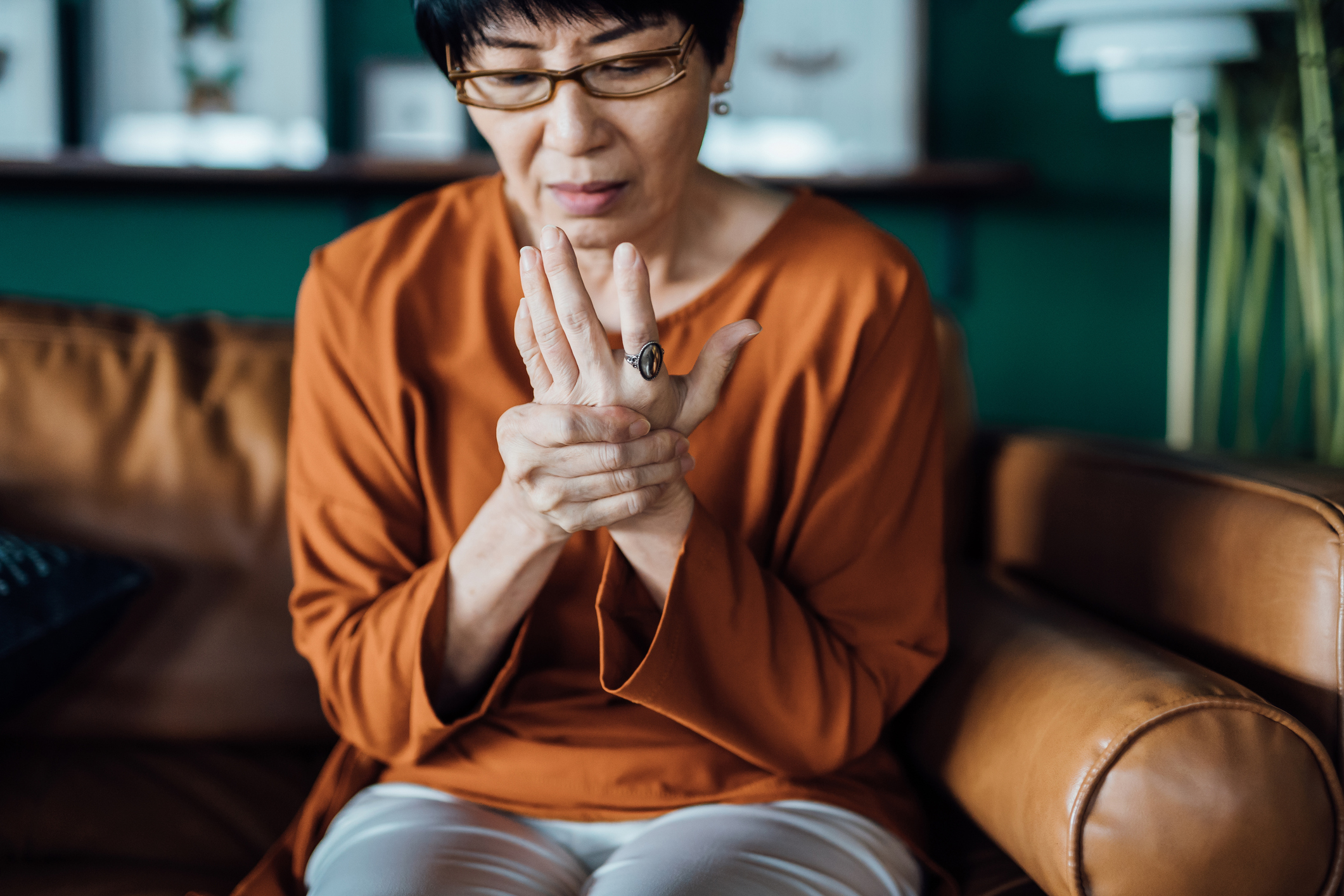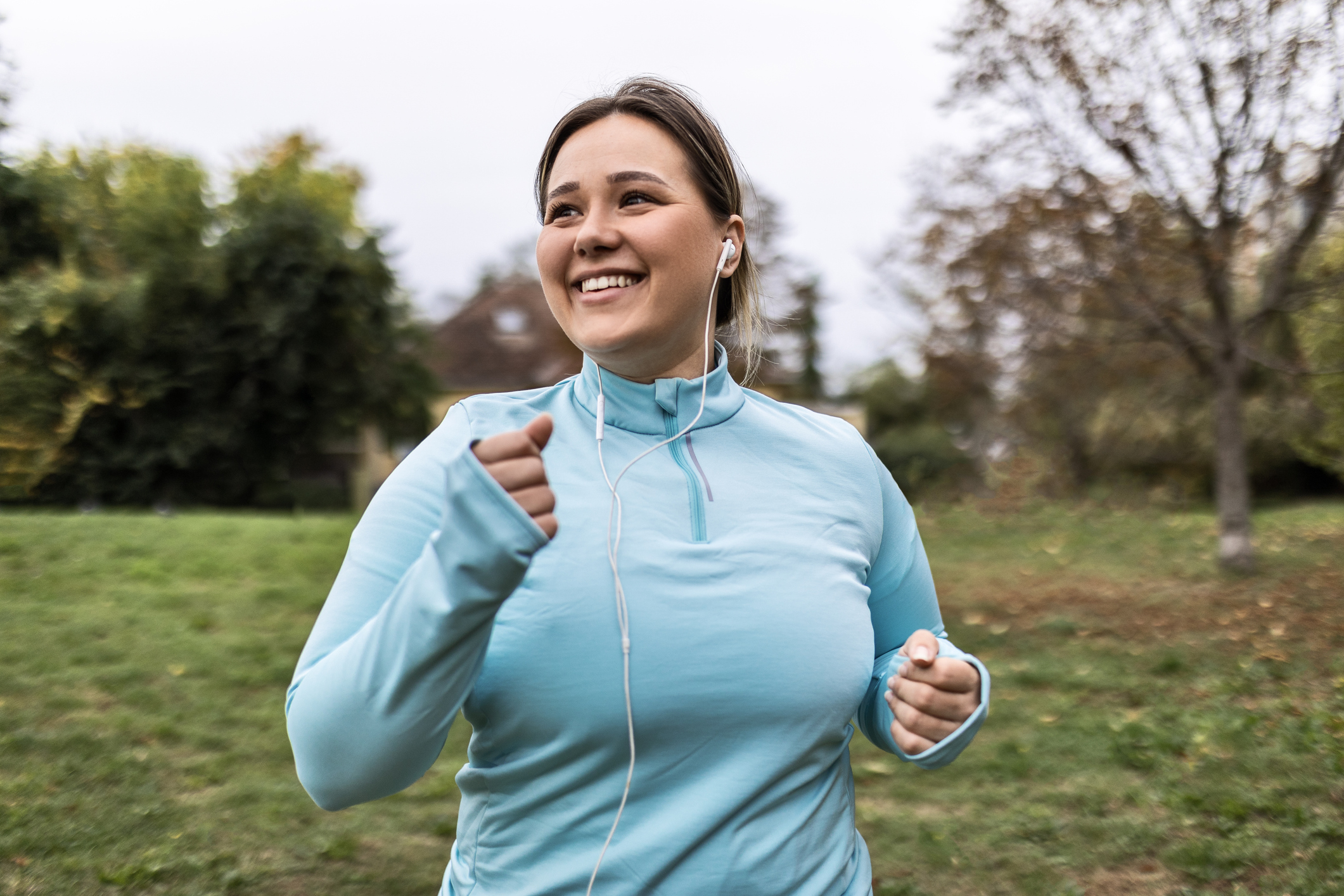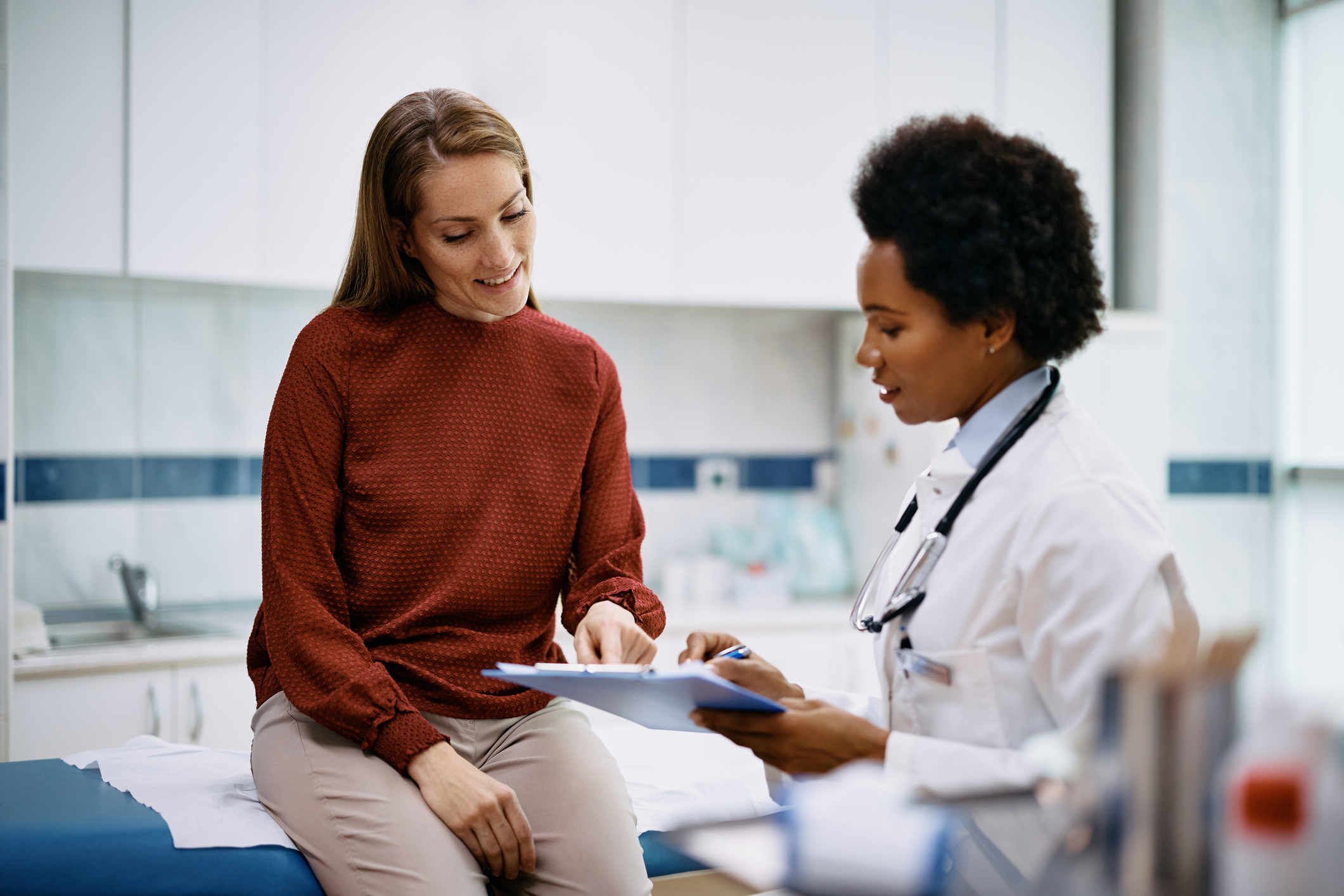The National Osteoporosis Foundation (NOF) estimates around 54 million Americans have osteoporosis or low bone mass (osteopenia). Osteoporosis is a disease that gradually weakens your bones to the point where they break easily. It is the most common bone disease, affecting people age 50 or older. It robs many people — mainly older women — of their ability to live independently. Thankfully, we can help our patients prevent osteoporosis by encouraging them to look for the warning signs early and to maintain a healthy lifestyle.
IN THIS BLOG:
Why is it important to start osteoporosis prevention early in life?
Achieving peak bone mass (PBM) between the ages of 17 to 25 is crucial because higher PBM reduces the risk of developing osteoporosis later in life. Starting prevention early helps build stronger bones that are less susceptible to weakening over time.
What lifestyle changes can help prevent osteoporosis?
Preventive measures include engaging in weight-bearing exercises, consuming a diet rich in calcium and vitamin D, limiting alcohol intake, avoiding smoking, and fall-proofing the home environment to reduce the risk of fractures.
Who is most at risk for developing osteoporosis?
Postmenopausal women, especially those who are white or Asian with smaller body frames, are at higher risk. Other risk factors include aging, family history, low hormone levels, inadequate intake of calcium and vitamin D, certain medical conditions, and the use of specific medications like glucocorticoid steroids.
How is osteoporosis diagnosed?
Osteoporosis is commonly diagnosed using a bone mineral density test called a dual-energy X-ray absorptiometry (DXA or DEXA) scan. This painless and quick scan assesses bone density and helps determine fracture risk.
What are the recommendations for osteoporosis screening?
The U.S. Preventive Services Task Force recommends osteoporosis screening for women over the age of 65 and for postmenopausal women younger than 65 who are at increased risk. Screening decisions for men are less clear due to insufficient evidence.AFMC
Weaker Bones = More Fractures and Longer Recovery
Because osteoporosis causes bones to grow weaker over time, patients can easily break a bone by coughing or bumping into something. Patients with osteoporosis often show no symptoms and may not even realize they have the disease until they break a bone. In fact, osteoporosis is a major cause of fractures in postmenopausal women and older men. Fractures can occur in any bone, but the most common osteoporosis-related fractures occur in the hip, backbone (spine), forearm, and wrist.

As our patients age, recovering from a broken bone can take longer, meaning their pain will also last longer. Broken hips are one of the more serious breaks, as many people with osteoporosis who break their hips are not able to live on their own and are more likely to die sooner.
Osteoporosis Typically Occurs in Older Women but Can Affect Anyone.
Anyone can get osteoporosis at any age. However, it is more common in women after menopause. According to the CDC, it affects around 1 in 5 (20%) women aged 50 and older and around 1 in 20 (5%) of men aged 50 and older. Men tend to have more peak bone mass (PBM) than women and lose it more slowly over time. Most men and women reach PBM between the ages of 17 to 25. The higher the PBM, the lower the patient’s risk of getting osteoporosis later in life.
Small, thin-boned women are at greatest risk. White and Asian women are the most likely to have osteoporosis because their body frames are generally smaller, and their PBM is lower.
There are other factors to consider, too:
- African American and Hispanic women have a lower risk of developing osteoporosis, but they are still at significant risk.
- Among men, osteoporosis is more common among Whites.
- Certain medications, including some cancer medications and glucocorticoid steroids, may increase a patient’s risk of developing osteoporosis.
- Some children and teens can develop a rare disease called idiopathic juvenile osteoporosis. While there is no confirmed cause, most children recover without treatment.
Several Factors Increase Osteoporosis Diagnoses.
Factors that may increase a patient’s risk of osteoporosis include:
- Age — Bone loss happens more quickly in old age. Over time, this increases a patient’s risk of osteoporosis.
- Body size — Slender, thin-boned women and men are at greater risk of developing osteoporosis due to having less bone to lose compared to larger-boned men and women.
- Race — White and Asian women are at higher risk than other races. White men are at a higher risk than African American and Mexican men.
- Family history — Research shows a patient’s risk for osteoporosis increases if either of the patient’s parents has a history of osteoporosis or hip fracture.
- Changes to hormones — Low estrogen levels in women after menopause can increase a patient’s chances of developing osteoporosis. Low levels of testosterone in men also increase a patient’s chances of developing osteoporosis.
- Diet — Patients who do not get enough vitamin D or calcium throughout their lives may have an increased risk of osteoporosis.
- Other medical conditions — Endocrine and hormonal diseases, gastrointestinal diseases, rheumatoid arthritis, certain types of cancer, HIV/AIDs, and anorexia nervosa can all increase a patient’s risk of osteoporosis.
Osteoporosis Prevention Starts with Healthy Choices.
While it is always good to encourage our patients to make healthy choices throughout their entire lives, starting as early as possible is key to preventing osteoporosis. The goal should be for our patients to achieve PBM as soon as possible. And while some who have osteoporosis may not be able to prevent themselves from getting it, there are steps they can take to resist further bone loss and decrease fractures.

Patients can prevent osteoporosis and further bone loss by:
- Staying physically active with weight-bearing exercise. These exercises force the body to work against gravity, prompting the body to produce new bone. At least 30 minutes of weight-bearing exercise, like walking, jump roping, hiking, or tennis can strengthen bones and help the body stay strong.
- Drinking alcohol in moderation. Individuals with osteoporosis should not drink more than one drink per day for women and two per day for men.
- Quitting smoking, or not starting if they don’t smoke. Smoking prevents the body from building calcium, a key component in strengthening bones.
- Eating a nutritious, calcium- and vitamin-D-rich diet. The earlier patients can start to incorporate calcium and vitamin D into their diet, the better. The best sources of calcium are from food, not supplements. Vitamin D helps the body absorb calcium. Patients’ vitamin D levels often drop in the winter and in northern areas where there is less sunlight. Older adults may also create less vitamin D, so it’s important our older patients continue to eat foods rich in vitamin D and take supplements if needed.
- Fall-proofing the home. Falls are the leading cause of broken bones, especially broken hips. A small fall can cause a patient with osteoporosis to break a bone. Falls happen most often in the home. We often don’t think about setting up our homes to prevent falls. Share the NIH National Institute on Aging’s Preventing Falls at Home: Room by Room guide with your patients for practical ways to fall-proof the home.
Screen for Osteoporosis During Routine Checkups.
The U.S. Preventive Services Task Force recommends screening patients for osteoporosis if they are:
- Women over the age of 65
- Postmenopausal women younger than 65 at increased risk
The Task Force also concluded that there is insufficient evidence to support whether screening men for osteoporosis to prevent fractures is harmful or beneficial.
Most osteoporosis screenings involve a bone mineral density test for patients over age 65, or younger if they have broken a bone recently. Patients can also be tested earlier if they smoke, have more than three drinks daily, take corticosteroids, or have a low body mass index.

Dual-energy X-ray absorptiometry scan (DXA or DEXA) is the most common bone mineral density test. This painless, quick scan can diagnose osteoporosis and osteopenia and can determine a patient’s chances of breaking a bone. It also checks the progress of bone growth from prescribed medications.
Patients may also use the Fracture Risk Assessment Tool (FRAX) calculation tool to determine their fracture risk independently. FRAX is based on individualized models that integrate risks associated with clinical risk factors that increase the risk of osteoporosis.
Encourage patients not to wait until they have a broken bone to strengthen their bones. Anyone at any age can start taking steps to prevent osteoporosis. By screening early and being aware of the warning signs, we can help our older patients live independently and make healthy lifestyle choices.
For more information on osteoporosis, use the resources below.
National Institutes of Health Osteoporosis and Related Bone Diseases National Resource Center
1-800-624-2663 (toll-free)
1-202-466-4315 (TTY)
Bone Health and Osteoporosis Foundation
1-800-231-4222 (toll-free)
For more important healthcare topics, follow AFMC on Facebook, Instagram, LinkedIn, X, and YouTube.
Subscribe to our newsletter for the latest news and updates, including the most recent episode of AFMC TV.


